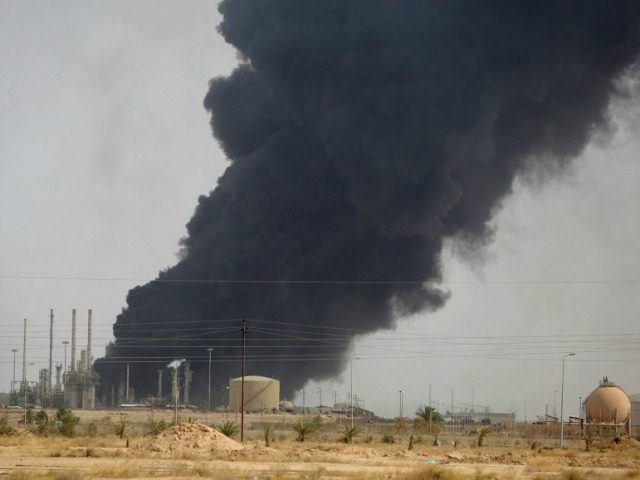Satellite images show that the Islamic State (ISIS/ISIL) has constructed hundreds of makeshift refineries in Iraq to offset the losses from U.S.-led airstrikes against the oil infrastructure that fuels and funds the jihadist group to the tune of tens of millions of dollars per month.
Much of the oil ISIS is currently using to generate revenue is reportedly coming from the makeshift facilities.
The Washington Post (WaPo) reports:
Aerial photos taken near the northern Iraqi city of Mosul show scores of tiny, makeshift refineries popping up in oil fields controlled by the Islamic State, evidence that the jihadists are finding workarounds after losing much of their oil infrastructure to airstrikes.
The micro-refineries — sometimes called “teapots” — consist of little more than a ditch or pit for storing crude and a portable metal furnace used to distill raw petroleum into fuel. Thousands of such systems have long been in operation in the Islamic State’s Syrian strongholds, but now they’re sprouting up around the more established, though heavily damaged, Iraqi oil fields, said Omar Lamrani, a senior analyst for Stratfor, a private, Texas-based intelligence company.
Since oil is one of the primary sources of revenue ISIS uses to fund its terrorist activity, the oil trade has become a primary target for the U.S.-led coalition fighting the jihadist group, which is considered the richest terrorist organization in modern history.
“In a single oil field there can be hundreds of these makeshift operations,” Stratfor’s Lamrani told The Post, citing satellite pictures showing a cluster of tiny furnaces around a Mosul field that was mostly just sand a year ago.
“It’s not the ideal way to do it, so their revenue is going down. But it still works,” he added.
WaPo obtained the images from Stratfor and AllSource Analysis, a Colorado firm that specializes in geospatial research.
The Post notes:
The tiny refineries are partly offsetting huge losses in income resulting from the disruption of traditional oil production in northern Iraqi fields controlled by the Islamic State since mid-2014. After capturing the facilities, the group’s leaders initially attempted to run them as businesses, retaining enough workers to keep the refineries operating and hauling the finished products by tanker truck to independent dealers in Turkey, Syria and Iraq’s Kurdish provinces, U.S. officials say.
ISIS was generating up to an estimated $50 million per month and producing 45,000 barrels per day at the peak of its illicit oil operations.
Early this year, the U.S. State Department noted that the U.S. air campaign aimed at crippling ISIS’ illicit oil business has reduced the group’s revenue to less than $1 million per day. Meanwhile, the Pentagon estimated that the airstrikes have also reduced production to less than 34,000 barrels daily.
“Stratfor estimates that oil contributed about $20 million a month to the Islamic State’s coffers as recently as March, with much of the petroleum coming from makeshift facilities,” reports The Post.
It adds:
The small furnaces, which heat raw petroleum to a high temperature and then capture and cool the vapors to create gasoline, produce thick clouds of black smoke and leave pools of toxic byproducts on the surface. But because they are small and scattered, the “teapot” refineries are harder to destroy from the air. And any that are destroyed can be easily and cheaply replaced, oil industry experts say.
Environmental concerns have limited the number of strikes President Barack Obama has authorized against ISIS oil targets, Rep. Robert Pittenger (R-NC), chairman of the Congressional Task Force on Terrorism and Unconventional Warfare, told Breitbart News.

COMMENTS
Please let us know if you're having issues with commenting.